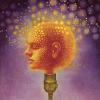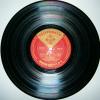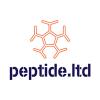The Naeser study, although small, used daily treatments for really long periods of time, something like 13 minutes. Some of their language was confusing me, perhaps I read it too fast, but it seemed like they sometimes even used a long period of time
per region, and did multiple regions. That would be a ton of time under the lights.
On a side note, I wanted to post about something I just found. So, I have Dr. Peat's book
Mind and Tissue, which is all about Russian brain physiology research, and it has a ton of information for these bio-hacking purposes. A lot of interesting discussion and theories about organismic evolution and it's role on sociological functioning, sexuality, etc. but a lot of information on changing the structure and chemical nature of the CNS. To accompany this, he has a great article titled
Biophysical Approaches to Altered States of Consciousness. In it, he mentions a compound called 2-benzyl-benzimidazole to decrease glycogen consumption, creatine and ATP consumption, and increase protein synthesis. Instantly, I was intrigued. I looked it up and found this:
http://www.ncbi.nlm....les/PMC3762282/ The Pharmacology of Actoprotectors: Practical Application for Improvement of Mental and Physical Performance Sergiy Oliynyk and Seikwan OhThey speak about these Actoprotectors, and to me, they seem to have potent nootropic value, and perhaps value in enhancing TULIP. They are essentially akin to synthetic, highly potent adaptogens, but strikingly different in many respects. They are/were used by the Soviets/Russians/Eastern European nations in the Olympics, in cosmonauts, in the military, in rescue workers for Chernobyl, etc. Primarily, they help the body operate under extreme stress, such as high altitude, hypoxia, extreme heat and cold, etc. One portion of it stated that certain Actoprotectors wouldn't benefit people who aren't under extreme amounts of stress or exertion, but they spoke about so many different compounds I really don't believe this holds true for them all. They also spoke about how they enhance physical and intellectual processes in healthy people, so I'd give it a go if I could. Here is one portion on Bemitil: It has been established that the therapeutic effect of bemitil is a function of its complex mechanism entailing cell genome activation, optimization of mitochondrial oxidation, oxidative stress reduction, and stimulation of cellular immune response (Shabanov, 2009b). Basically, bemitil (and other benzimidazole actoprotectors) is similar to purine bases in its chemical structure (Fig. 4). It was supposed that this structural similarity explains the influence of bemitil on the cell genome, the amplifying expression of RNA and proteins, particularly enzymes of gluconeogenesis and oxidative phosphorylation, as a central link in bemitil’s mechanism of action. This activation is first expressed in organs (i.e. the liver, kidneys, and alimentary tube) having short-lived, renewable proteins. (...) Bemitil primarily encourages anaerobic energy production, ATP formation, and resynthesis of glucoses from the products of carbohydrates decay (lactate and pyruvate) and from glycerol and amino acids, which mostly occurs in the liver and kidneys. Bemitil promotes the utilization of lactates (one of the main factors in work capacity reduction) under excessive physical loads which process is conjugated with the Cori and glucose-alanine cycles (Fig. 5). In these cycles, bemitil neutralizes and eliminates not only lactate but also the nitrogeneous products of decay (ammonia, etc.)."Interestingly, I had inquired about cori cycle enhancers in the TULIP Stacking Thread. Another interesting aspect was the increases in pulse, temperature, oxygen consumption, etc. which Dr. Broda Barnes and Dr. Peat have spoken about a lot, although I was always skeptical (of increasing my heart rate on purpose). Have some digging to do.






















































